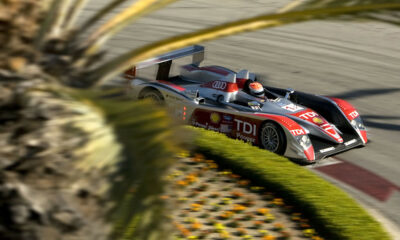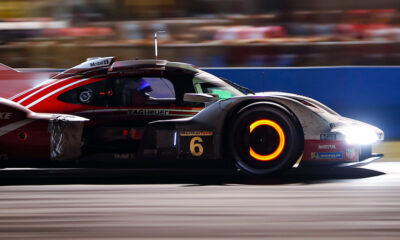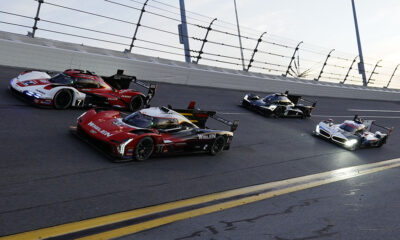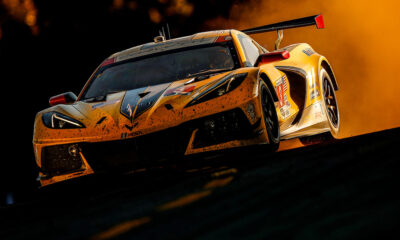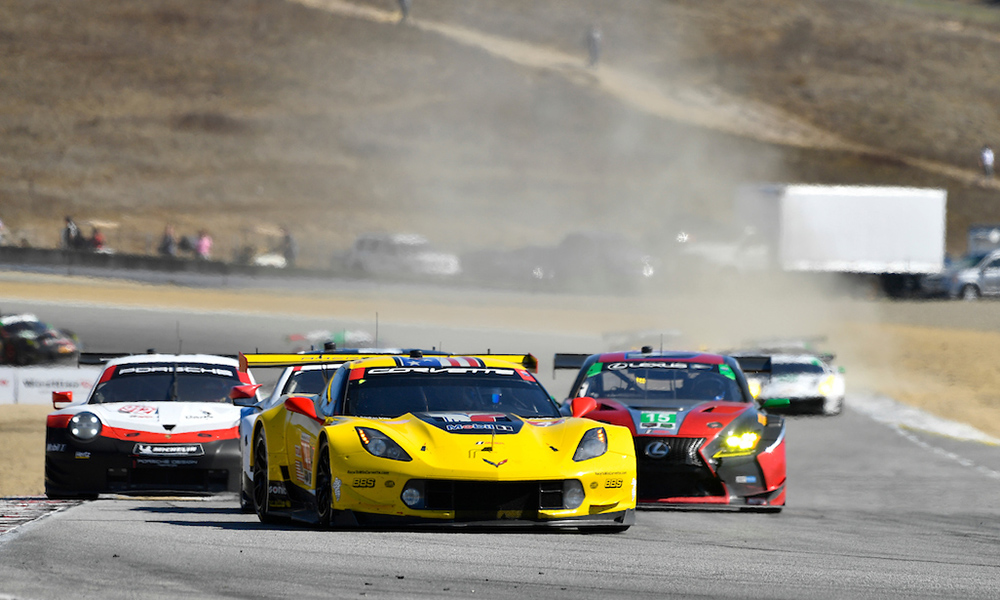
Photo: Michelin
To succeed in the second-to-last points-paying weekend of the 2019 season, IMSA teams and Michelin need to be ready for a unique outlier in Monterey. And as is often the case in California, seemingly contradictory factors are in play.
After a five-race summer stretch featuring high heat, frequent rain and a lot of elevation, teams generally look forward to only one of those elements at WeatherTech Raceway Laguna Seca. The elevation stays, but the sand becomes front and center in the planning process.
Sizing Up the Sand
With the track’s aging old, but abrasive surface coupled with the sand blowing on track at every opportunity, teams are often chasing the track all weekend.
“The biggest variable is the temperatures. It can be cool, it can be hot, and you can have the wind blowing sand on the track,” says Ken Payne, technical director, motorsport, Michelin North America.
“That combined with the weathered pavement can make for some remarkably low grip situations. Some cars are hard on tires and may wear them quickly.
“Some teams may run a harder compound solution than you might just think because of the wear characteristics.”
So how is this track contradictory, as both low grip and high wear?
The Monterey track surface has significant worn pavement. What this does is expose more aggregate that polishes at a micro level, but becomes more aggressive at a macro level.
This means tires slip more due to the lower micro texture related grip and wear at relatively high rates, due to the overall larger scale roughness.
Add in the frequency of the sand on track, and the track conditions can change nearly every lap. Teams must rely on past data and simulations to prepare, since they won’t test here due to expense and operational restrictions.
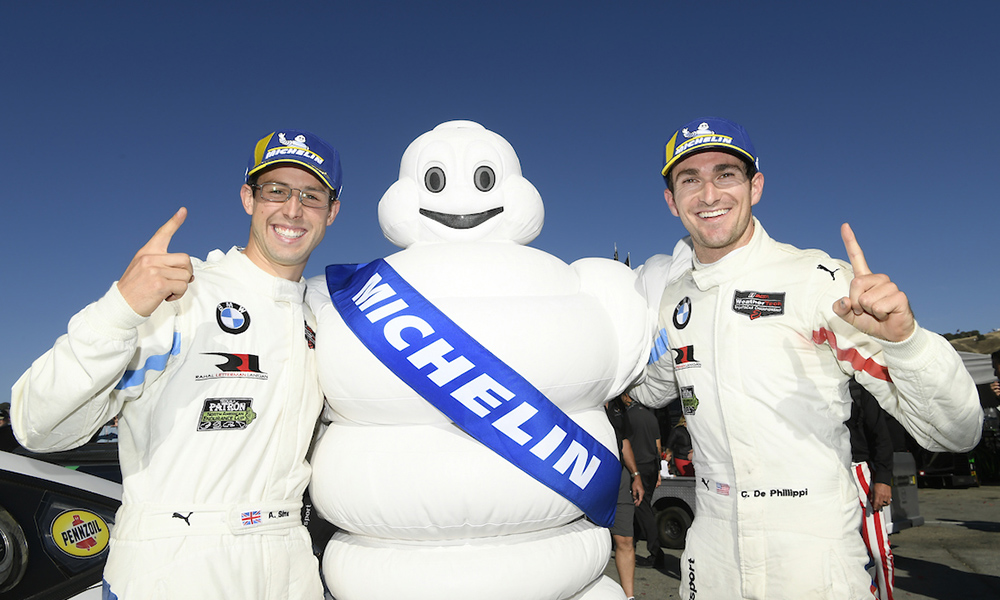
Photo: Michelin
Calling the Strategy Shots
As noted in the pre-VIR Michelin IMSA Insider, teams have several ways to strategize and break up their stints. Monterey consistently has been one of the most intense strategic chess matches of the year.
GT Le Mans each of the last three years has seen fuel mileage define the race.
Last year, two early cautions helped the eventual top two finishers stretch their mileage to make the two-hour, 40-minute race distance on only two pit stops.
Both the No. 25 BMW Team RLL M8 GTE and No. 912 Porsche 911 RSR were able to make it 77 minutes on their final stint, running 54 laps, to cross the finish line on fumes. They pitted under the fourth and final caution that flew during the race.
“It was the longest (stint) we’d done,” said winning co-driver Connor De Phillippi. “We hoped, fingers crossed the tires would last, but they certainly did – just like at VIR. To go over an hour (1:17) on the tires and they still held strong. No issues at all. Big thanks to Michelin for making a great tire.”
What the No. 25 BMW did in 2018 was essentially an encore of what the No. 24 BMW did here in 2017. The car was able to run a 76-minute final stint, over 53 laps, to hold off the No. 62 Risi Ferrari en route to the win.
And in 2016, Ford made waves with its EcoBoost V6 engine. Richard Westbrook soft pedaled the No. 67 Ford GT for 78 minutes, and 52 laps, on his final stint in the two-hour race. The one-stop strategy netted the first global victory for the new Ford GT.
“The numbers he was making were just unbelievable. I never thought we’d be able to do it and I think that actually helped look after the tires,” said his co-driver, Ryan Briscoe. “The pace was just as good as anyone’s at the end. It’s a phenomenal result.”
GT Daytona has also seen fuel mileage come into play. Most notably, it occurred in 2014 when the leading Flying Lizard Audi stopped short of the start/finish line exiting the last turn. It opened the door for Turner Motorsport BMW to snatch the win at the checkered flag.
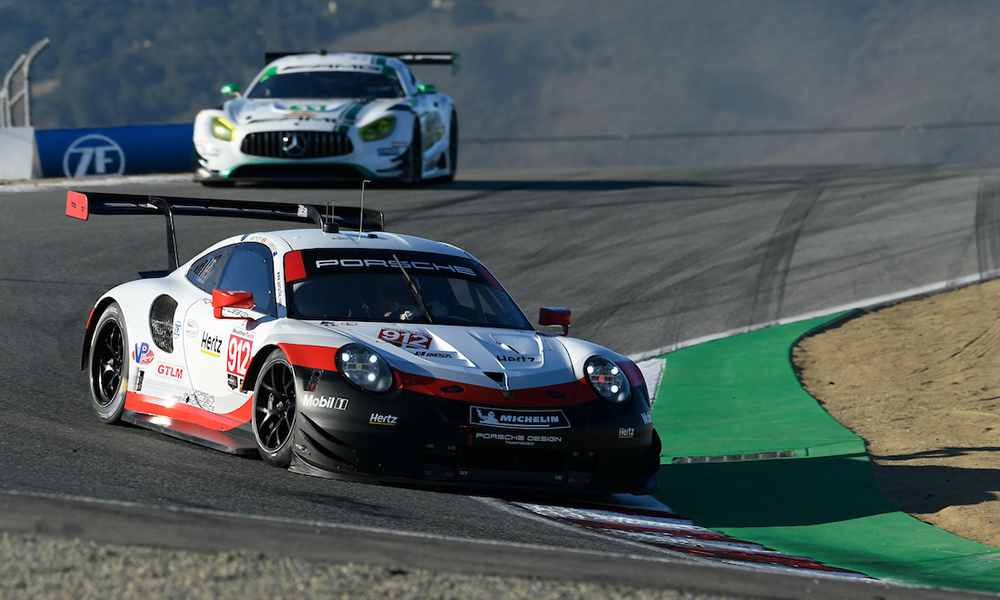
Photo: Michelin
The Final Two Races
With championship battles on the line, Monterey is a pivotal stop on the schedule as the last chance to make headway before the season finale weekend at Michelin Raceway Road Atlanta in October.
“We understand the psyche of the track, if you will,” Payne says. “You can really piece it together from all the other places we’ve gone.
“It’s got elevation change, it’s got some quick corners and it’s got some long duration corners. You have a pretty good idea of what you’ll get.
“Even though this is the first year with us for many of the teams, we’ve all been racing there for a long time.”
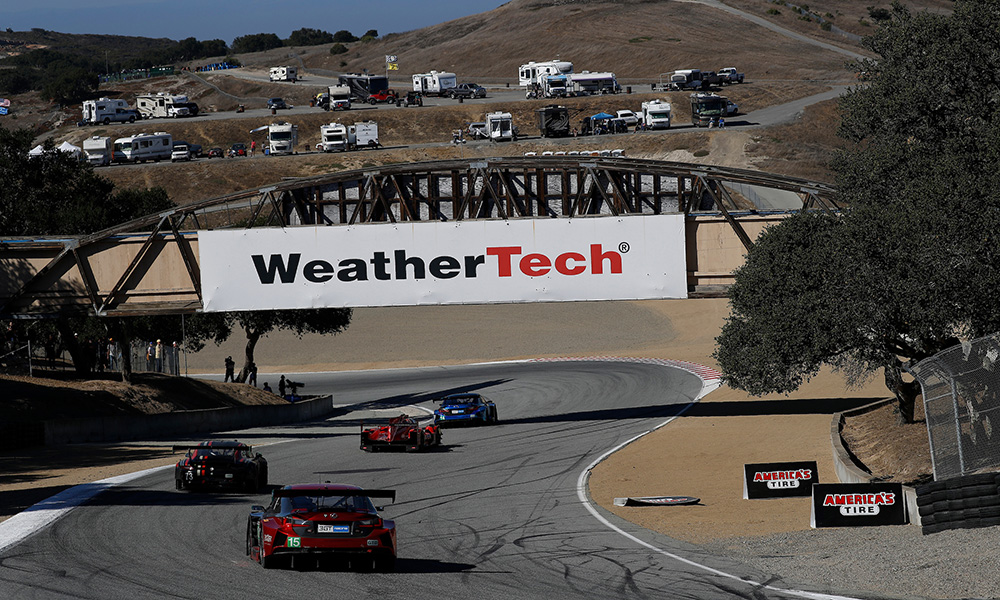
Photo: Mike Levitt/IMSA




















